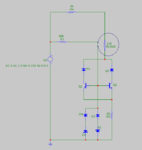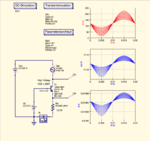franticEB
Full Member level 3
hi,
i have to mantain a constant sinusoidal current in RLOAD with simple circuit in figure below

but the current in RLOAD isn't sinusoidal because of the circuit itself.

How could i mantain a constant sinusoidal current in RLOAD? Which kind of circuit is more suitable for this application?
Thanks let me know.
i have to mantain a constant sinusoidal current in RLOAD with simple circuit in figure below

but the current in RLOAD isn't sinusoidal because of the circuit itself.
How could i mantain a constant sinusoidal current in RLOAD? Which kind of circuit is more suitable for this application?
Thanks let me know.
